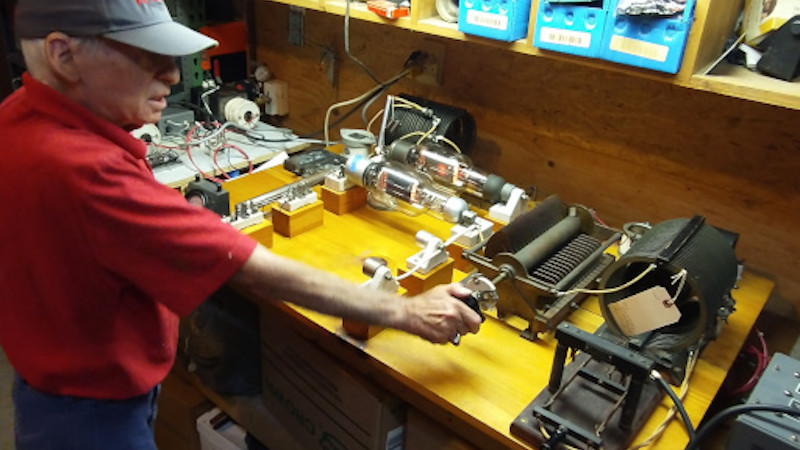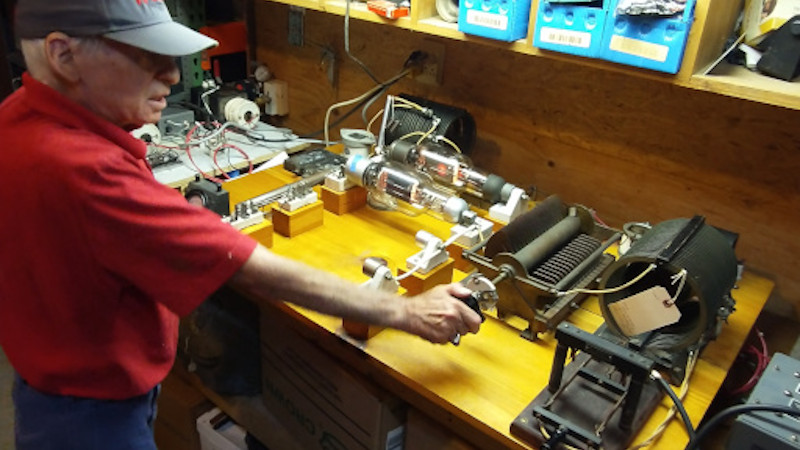2 Likes
1 Comments


When we were kids we rode bicycles without pads and helmets. We drank sugary drinks. We played with chemistry sets and power tools. We also built things that directly used AC line current. [Mike] remembers and built one, presumably more to discuss the safety precautions around things that can shock you and not entice you to duplicate it. He calls it The Retro QRP Widowmaker, if that's any kind of a hint. (Video of this unsafe transmitter also embedded below.)
The design showed up from time to time in old electronic magazines. Built on an open board and with no ground wire, the radio didn't need a complex power supply. This wasn't limited to transmitters, either. Some TVs and radios had a "hot chassis." That's why we were taught to touch an unknown chassis with the back of your hand first. A shock will contract your muscles and that will pull your arm away instead of making you grab the electrically active part.
For safety's sake, [Mike] used an isolation transformer to keep from having a disaster. A big resistor drops a lot of voltage to supply the tube in the circuit. There was a neon bulb to indicate if you have your plugs the wrong way around making things dangerous.
We enjoyed [Mike's] excellent code using an old J-38 style key. Not everyone uses a paddle or a keyboard. Nowadays, you don't need high voltages for little transmitters. Also, $50 today is probably worth less than $10 was back then. If you have a hankering for vintage gear, try old transistors, instead.
#radiohacks #hamradio #safety #transmitter #tube


Our Hackaday team is spread across the world, but remains in easy contact through the magic of the Internet. A number of us hold amateur radio callsigns, so could with a bit of effort and expenditure do the same over the airwaves. A hundred years ago this would have seemed barely conceivable as amateurs were restricted to the then-considered-unusable HF frequencies.
Thus it was that in December 1921 a group of American radio amateurs gathered in a field in Greenwich Connecticut in an attempt to span the Atlantic. Their 1.3 MHz transmitter using the callsign 1BCG seems quaintly low-frequency a hundred years later, but their achievement of securing reception in Ardrossan, Scotland, proved that intercontinental communication on higher frequencies was a practical proposition. A century later a group from the Antique Wireless Association are bringing a replica transmitter to life to recreate the event.
A free-running oscillator is today rarely seen in a radio transmitter, but at the time their single-tube Colpitts oscillator using a UV-204 transmitting tube would have been considered a stable source. That fed a 1KW power amplifier using three more UV-204s in parallel, which in turn fed a Marconi-style T antenna design with an earth counterpoise of multiple radial wires. The replica was originally built for an event in 1996, and substitutes the similar 204A tube for the now unobtainable UV-204. Even then, hundred-year-old tubes are hard to find in 2021, so they could only muster a single working example for the PA.
All in all it's a very interesting project, and one of which we hope we'll hear more as the anniversary approaches. If we can get the transmission details we'll share them with you, and let's see whether the same distances can be traversed with the more noisy conditions here in 2021.
To demonstrate how advanced this transmitter was for 1921, take a look at the Alexanderson alternator, its mechanical contemporary.